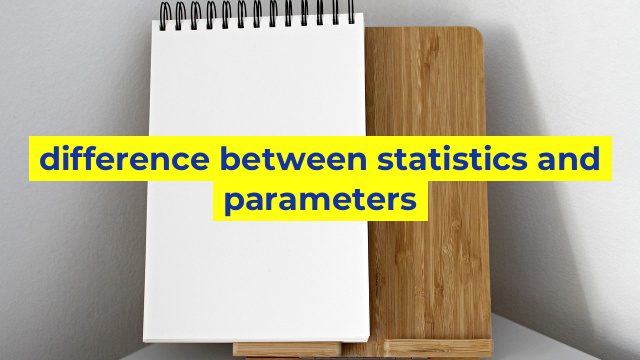The Difference Between Statistics and Parameters
In the world of data analysis, two terms that are often used interchangeably are “statistics” and “parameters.” While these terms are related, they actually refer to different things. Understanding the difference between them is important for any researcher or analyst who wants to make accurate conclusions from their data.
What are Statistics?
Statistics are measurements or summaries of data. They can be used to describe a sample of data, rather than an entire population. Examples of common statistics include mean, median, and mode. These measures provide a way to summarize the data in a way that is easier to understand than looking at each individual data point.
Statistics can also be used to make inferences about a population based on a sample of data. This is known as inferential statistics. By analyzing a sample of data, researchers can make conclusions about the larger population that the sample represents.
What are Parameters?
Parameters, on the other hand, refer to characteristics of an entire population. Rather than focusing on a sample of data, parameters describe the full set of data that a researcher is interested in. Examples of parameters include population mean, variance, and standard deviation.
While it is often impossible to measure a parameter directly, it can be estimated through inferential statistics. By analyzing a sample of data, researchers can make projections about what the parameter is likely to be for the entire population.
The Bottom Line
The key difference between statistics and parameters is that statistics refer to measurements or summaries of sample data, while parameters describe characteristics of an entire population. Both terms are important for researchers and analysts, as they provide different types of information about the data being studied. By understanding the difference between them, researchers can make more accurate conclusions about the data they are working with.
Table difference between statistics and parameters
| Statistics | Parameters |
|---|---|
| Statistics are numerical values calculated from a sample of data. | Parameters are numerical values calculated from the entire population. |
| Statistics are used to make inferences about the population. | Parameters are used to describe the population. |
| A statistic is subject to random variation. | A parameter does not vary as it is based on the entire population. |
| Statistics are used to estimate parameters when it is not possible to sample the entire population. | Parameters are often used in hypothesis testing. |
